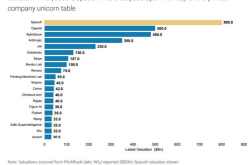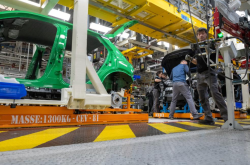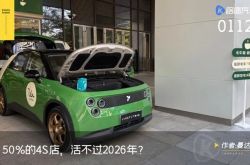"Jueying Kaiwu" World Model: Engineering Advancements from Assisted Driving to Embodied Intelligence
![]() 07/28 2025
07/28 2025
![]() 506
506
Produced by Zhineng Technology
At the World Artificial Intelligence Conference (WAIC) 2025, SenseTime Jueying unveiled its upgraded "Jueying Kaiwu" World Model, showcasing its prowess in autonomous driving data generation, simulation training, and embodied intelligence interaction.
While the comprehensive display underscores a high degree of system integration, a closer look reveals the need to scrutinize its core modeling capabilities and assess the applicability and limitations of its product platform in high-level interactions and real-world deployments. Our focus, from a technical perspective, is on analyzing the core mechanisms and potential of "Jueying Kaiwu" in assisted driving and embodied intelligence.
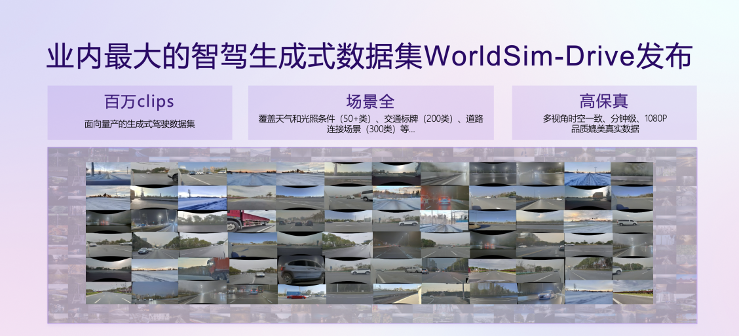
01 Innovation in Assisted Driving Methods: Balancing Efficiency and Control
The standout technical feature of "Jueying Kaiwu" is its efficient and controllable synthetic data generation method, which addresses the heavy reliance on real-world data in assisted driving. By incorporating large model capabilities into data generation, it aims to tackle long-standing issues in traditional simulation tools, such as lack of diversity, scenario customization difficulties, and low generation efficiency.
From a physical modeling standpoint, "Jueying Kaiwu" demonstrates strong abstraction capabilities for real-world driving environments. The system not only approximates real-world images visually but also models scene logical relationships accurately through multimodal control, encompassing dynamic traffic behavior, lighting, and viewpoint changes.
Based on current A100 GPU generation speed estimates, its efficiency surpasses most manual collection methods, especially in training cycles requiring high frequency, where it proves its practical value.
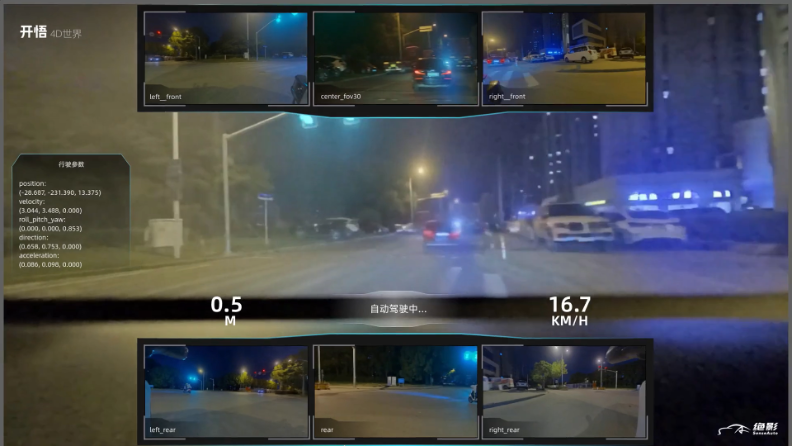
However, the "realness" of the data is constrained by the training model's semantic depth and ability to construct physical causal logic. In complex scenarios like traffic accidents, non-standard road structures, and nighttime emergencies, its generalization capabilities need to be verified through large-scale practical tests.
While the platform's support for prompt word and image click generation facilitates productization, it may lead to user misconceptions about "real usability." While simplifying interaction and enhancing customizability, it could potentially divert developers' attention from the accuracy of underlying simulation logic.
Therefore, "Jueying Kaiwu" is best suited as an early-stage algorithm training and strategy pre-validation tool rather than a replacement for real-vehicle validation.
SenseTime's "WorldSim-Drive" dataset, built on this model, encompasses a comprehensive range of data volumes and label types, reaching millions of segments with labels for multi-view, lighting, and traffic signs, thereby enhancing algorithm robustness during training.
Currently, it serves as a "data engine" for rapid model warm-up and generalization capability foundation-laying. The value of "Jueying Kaiwu" in assisted driving lies not in replacing real-world testing but in establishing a low-cost, controllable, and high-coverage training data system to address the "long-tail scenarios" gap in existing testing systems. The real challenge remains the model's generalization ability in unseen real-world complex traffic behaviors.
02 Configuration Experiments Towards Embodied Intelligence: From Environmental Modeling to Interaction Logic Generation
While data generation for assisted driving involves static space and single-dimensional interaction modeling, embodied intelligence demands more complex world models, encompassing high-frequency real-time interaction, causal chain construction, multi-view alignment, and physical feedback simulation.
"Jueying Kaiwu" strives to move from three-dimensional space to four-dimensional spacetime construction, creating a real-time responsive 4D training environment. Its most sophisticated technical aspect is the fusion of 3DGS (three-dimensional high-fidelity reconstruction) and semantic modeling to form a real-time simulation environment covering a 1km² area, enabling real-time interaction between strategy models and the simulated environment.
This 1:1 closed-loop testing mechanism is crucial for interactive learning methods like reinforcement learning, allowing for numerous strategy verifications and safety assessments in virtual space, thereby reducing reliance on real-world physical experiments.

The system generates synchronized data from both first-person (perceptual perspective) and third-person (observer perspective) views, maintaining spatial-temporal consistency. Previously, robot training often relied solely on single-view data, making it challenging for models to balance spatial planning and motion details.
Dual-view data not only enriches training feedback but also provides embodied agents with a degree of "self-assessment" capability. The complexity of embodied intelligence extends beyond high-precision modeling and view alignment.
In actual engineering deployments, issues often arise in implementing simulated actions on real hardware. Even if the world model generates a feasible strategy path in simulation, ensuring the robot's robustness and safety in real environments remains challenging. The Sim2Real problem, while partially mitigated, still persists.
SenseTime proposes building an embodied 3D asset library encompassing various spaces, objects, and tasks (e.g., kitchens, desks, robotic arm operations), providing material support for the world model. This asset-level system organization offers significant advantages in constructing task graphs and predicting motion paths.
Combining high-fidelity data generation with motion trajectory abstraction establishes a more general foundation for interactive behavior. The current display content leans towards tasks being "generatable" and "pre-rehearsable," yet in actual engineering scenarios like "strategic reasoning," "action redundancy compression," and "task error tolerance," it has yet to demonstrate sufficient systematic capabilities.
Therefore, a more reasonable perspective is that "Jueying Kaiwu" provides environmental-level support for embodied intelligence in early training stages. To build a complete interactive model system, it is necessary to complement the middle-level bridge of cognitive-level modeling and feedback processing.
The application of "Jueying Kaiwu" in embodied intelligence showcases the technical shift from spatial modeling to interactive feedback. Its capabilities in 4D space construction and multi-view data generation are forward-looking, but its role as a "full-flow solution" for embodied training remains incomplete.
The key to future development lies in constructing a strategy model layer with transferability and practical reasoning capabilities, transcending mere environmental-level construction.
Summary
Amidst the technological surge of Physical AI, the concept of "world model" is continually expanding and generalizing. From an engineering standpoint, its value ultimately reverts to a fundamental question: whether it genuinely helps intelligent agents "understand" their environment and respond in a verifiable manner.
From understanding the world to acting within it, the real challenge for AI is not generating a world but understanding the rules and variables behind it and making correct decisions amidst uncertainty. This necessitates not only generative power but also reasoning power and adaptability.

